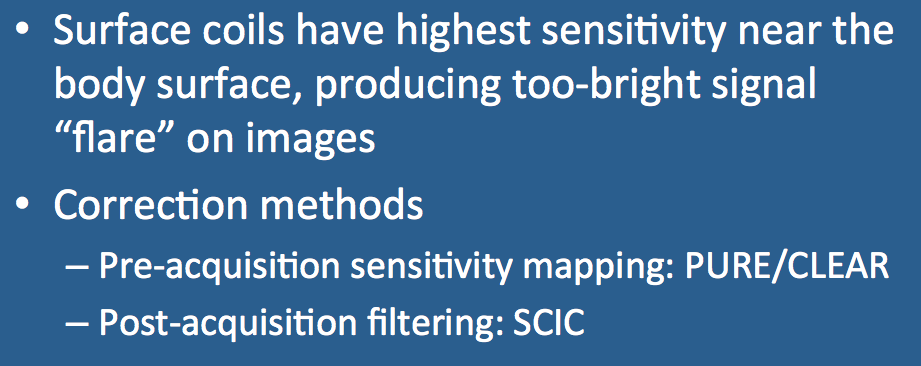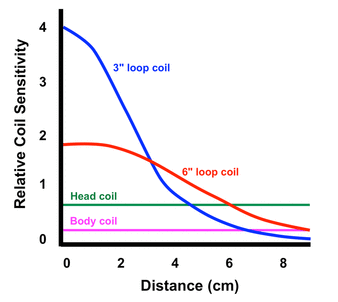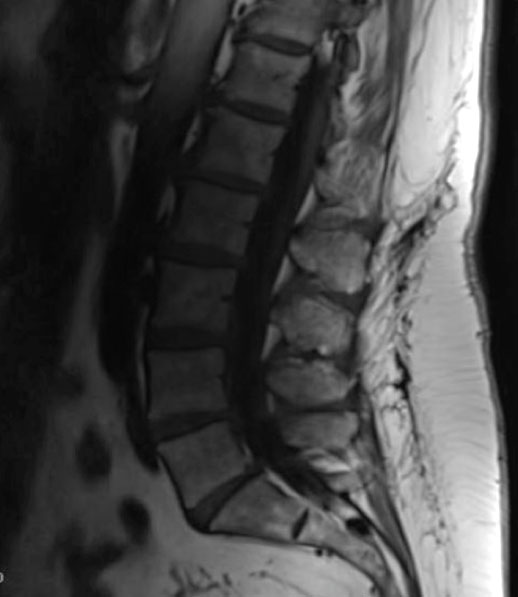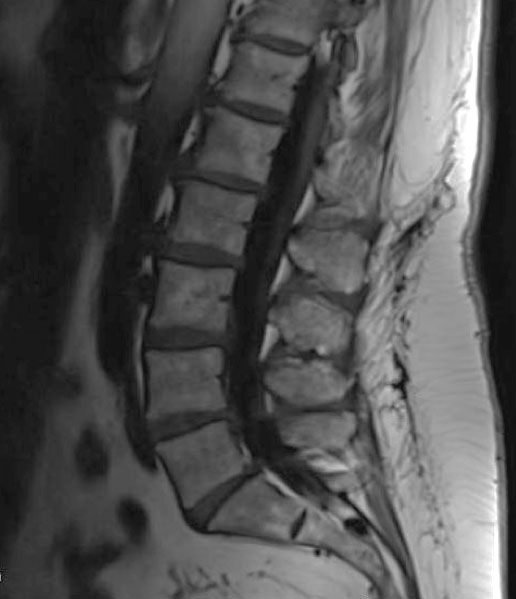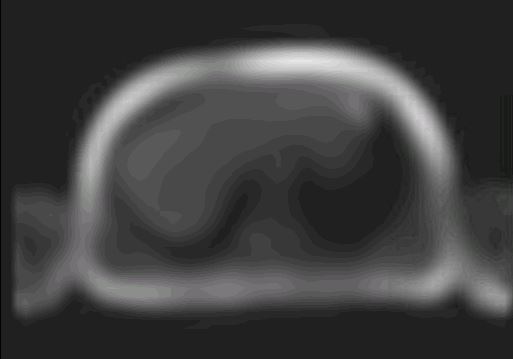|
MR imaging is increasingly performed using arrays of small surface coils placed near or on the body, often in conjunction with parallel imaging. The advantage of using small surface coils is that they produce a higher signal-to-noise ratio (SNR) than would be possible from a larger, more distant coil. The disadvantage is non-uniformity of signal. The depth of penetration of coils is inversely proportional to their diameters. Signals arising superficially in the patient are accentuated, while those deep to the patient are attenuated. The resultant bright surface signal is sometimes referred to as surface coil "flare".
|
The simplest solution to surface coil flare is to apply a post-processing filter to the reconstructed image. Such filters correct for low spatial frequency intensity modulations, enhance image contrast, and reduce noise. They are known generically known as SCIC (Surface Coil Intensity Correction). Some version of SCIC is offered by every vendor, and as a rule should be routinely used, especially for spine, extremity, and body imaging. Intensity correction filters should NOT be used, however, when quantitative data is needed, such as for quality assurance/ SNR measurements, T2-cartilage mapping, functional MRI, etc.
|
For multichannel parallel imaging it is possible to make corrections for non-uniform receiver coil profiles prior to imaging. These methods are known under different vendor tradenames: GE's (PURE - "Phased array Uniformity Enhancement"), Siemens' (Prescan Normalize), Philips' (CLEAR - "Constant LEvel AppeaRance"), and Hitachi's (NATURAL - "NATural Uniformity Realization Algorithm"). Unlike SCIC, these pre-scan correction methods require obtaining a brief surface coil sensitivity calibration scan prior to imaging.
|
For most applications it is possible to use both pre- and post-processing coil uniformity corrections together.
Advanced Discussion (show/hide)»
In addition to the restrictions on the use of all filters for quantitative imaging as described above, prescan methods like PURE/CLEAR should be avoided when the imaged field contains large metallic implants. The coil calibration will likely fail or be inadequate and the "corrected" image may be worse than the "uncorrected" one.
Because PURE/CLEAR methods require a calibration scan prior to imaging, any patient motion between the two scans may cause correction to fail or may generate artifacts.
References
Belaroussi B, Milles J, Carme S, et al. Intensity non-uniformity correction in MRI: existing methods and their validation. Med Image Anal 2006; 10:234-246. (This review shows that there are many new and interesting methods for solving the image intensity problem than are available on current clinical scanners).
GE Healthcare. MR Field Notes: RF Coils...They've come a long, long way. 2005.
Hayes CE, Axel L. Noise performance of surface coils for magnetic resonance imaging at 1.5T. Med Phys 1985; 12:604-7.
McVeigh ER, Bronskill MJ, Henkelman RM. Phase and sensitivity of receiver coils in magnetic resonance imaging. Med Phys 1986; 13:806-814.
Vovk U, Pernus F. Likar B. A review of methods for correction of intensity inhomogeneity in MRI. IEEE Trans Med Imaging 2007; 26:405-421.
Wallner Bk, Edelman RR, Bajakian RL, et al. Signal normalization in surface-coil MR imaging. Am J Neuroradiol 1990; 11:1271-2.
Belaroussi B, Milles J, Carme S, et al. Intensity non-uniformity correction in MRI: existing methods and their validation. Med Image Anal 2006; 10:234-246. (This review shows that there are many new and interesting methods for solving the image intensity problem than are available on current clinical scanners).
GE Healthcare. MR Field Notes: RF Coils...They've come a long, long way. 2005.
Hayes CE, Axel L. Noise performance of surface coils for magnetic resonance imaging at 1.5T. Med Phys 1985; 12:604-7.
McVeigh ER, Bronskill MJ, Henkelman RM. Phase and sensitivity of receiver coils in magnetic resonance imaging. Med Phys 1986; 13:806-814.
Vovk U, Pernus F. Likar B. A review of methods for correction of intensity inhomogeneity in MRI. IEEE Trans Med Imaging 2007; 26:405-421.
Wallner Bk, Edelman RR, Bajakian RL, et al. Signal normalization in surface-coil MR imaging. Am J Neuroradiol 1990; 11:1271-2.
Related Questions
How do receive-only coils work?
How do receive-only coils work?
